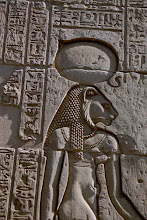 Christopher Miles says: A sculptor I know, who came out of art school at the height of minimalism in the late 1960s, once told me how a next generation of artists began to realize the impossibility of creating pure form that eschewed reference. This, he reasoned, was the natural response of artists rethinking their relationship to content, largely via conceptual art and postmodern approaches to image-making, and engagements with space and context that would come to be defined with terms like “postminimalist” and “expanded field.” Patrick Hill seems to want to revisit both sides of that juncture — to produce forms of stark geometry and purity, and to complicate them with plays of transparency, surface, material and engineering while contaminating them with the sorts of associations we attach to patterns, textures, shapes, hues and spatial relationships. Combinations of materials — including glass, concrete, wood, marble and fabric — in units most easily described with words like “sheet,” “block,” “slab” or “swath,” often stacked, leaned or spliced together, can become, in Hill’s delicate (and dangerous) handling, threatening or comforting, burdensome or uplifting. Their unions and intersections can translate to erotic or awkward. This is Hill’s talent — that he can deploy geometry that makes you blush or feel anxious, and that he additionally can make it seem fey or macho, or goth, or punk rock or hippie. As smart about construction as he is about subcultures and dress codes, and informed by both the strategies and critiques of the minimalist and postminimalist epoch — the assignations of gender, attitude, class and politics that were both teased out of and heaped onto largely abstract art — Hill turns all that into a playground, and if at first you think the gravity-harnessing and defying results seem lite, look again, for while they may not always deal in gravitas, they do pack a load.
Christopher Miles says: A sculptor I know, who came out of art school at the height of minimalism in the late 1960s, once told me how a next generation of artists began to realize the impossibility of creating pure form that eschewed reference. This, he reasoned, was the natural response of artists rethinking their relationship to content, largely via conceptual art and postmodern approaches to image-making, and engagements with space and context that would come to be defined with terms like “postminimalist” and “expanded field.” Patrick Hill seems to want to revisit both sides of that juncture — to produce forms of stark geometry and purity, and to complicate them with plays of transparency, surface, material and engineering while contaminating them with the sorts of associations we attach to patterns, textures, shapes, hues and spatial relationships. Combinations of materials — including glass, concrete, wood, marble and fabric — in units most easily described with words like “sheet,” “block,” “slab” or “swath,” often stacked, leaned or spliced together, can become, in Hill’s delicate (and dangerous) handling, threatening or comforting, burdensome or uplifting. Their unions and intersections can translate to erotic or awkward. This is Hill’s talent — that he can deploy geometry that makes you blush or feel anxious, and that he additionally can make it seem fey or macho, or goth, or punk rock or hippie. As smart about construction as he is about subcultures and dress codes, and informed by both the strategies and critiques of the minimalist and postminimalist epoch — the assignations of gender, attitude, class and politics that were both teased out of and heaped onto largely abstract art — Hill turns all that into a playground, and if at first you think the gravity-harnessing and defying results seem lite, look again, for while they may not always deal in gravitas, they do pack a load.Friday, February 20, 2009
Subscribe to:
Post Comments (Atom)

No comments:
Post a Comment